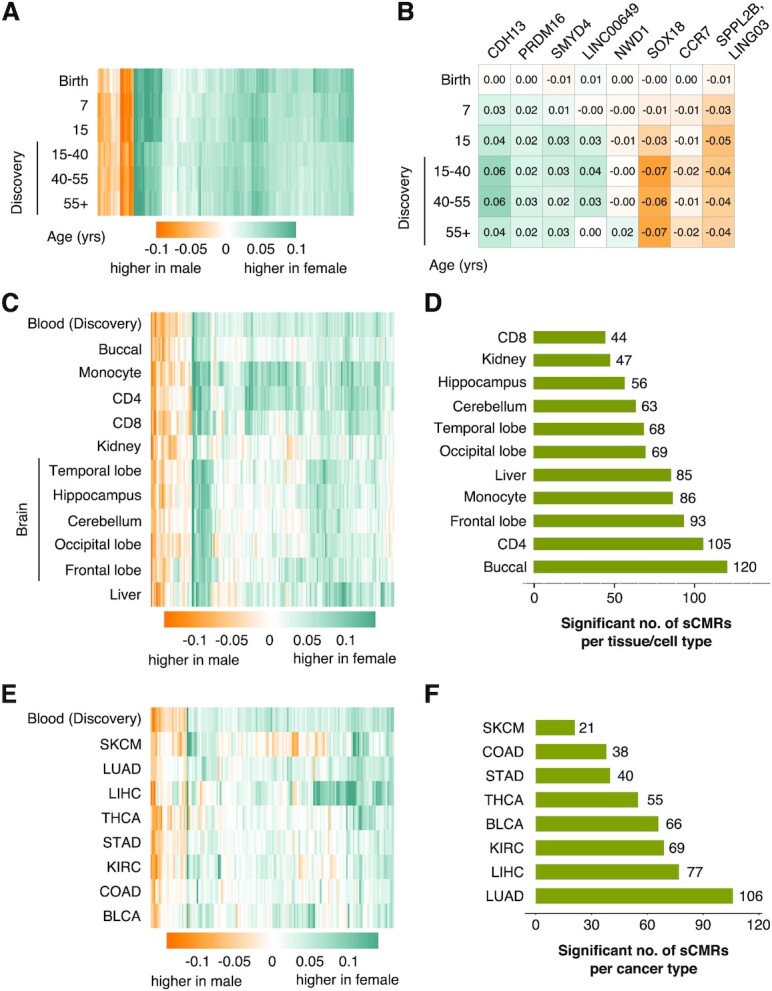Figure 5.

sCMRs were remarkably stable across the life span and a subset were cell, tissue, and cancer status agnostic. (A) Heatmap of the mean composite betas difference (female minus male) for the 179 validated sCMRs split by age categories. (B) Heatmap of the 8 sCMRs that changed during postnatal development. These sCMRs mapped to the genes included in the figure. (C) Heatmap of the mean composite beta difference (female minus male) for the 179 validated sCMRs across a variety of tissues. Blood is included for comparison. (D) Bar graphs showing the number of sCMRs that were significantly different between males and females cross the indicated cells and tissues. (E) Heatmap showing the mean composite beta differences (female minus male) for sCMRs across a variety of cancer types: thyroid carcinoma (THCA), skin cutaneous melanoma (SKCM), stomach adenocarcinoma (STAD), lung adenocarcinoma (LUAD), kidney renal clear cell carcinoma (KIRC), liver hepatocellular carcinoma (LIHC), colon adenocarcinoma (COAD) and bladder urothelial carcinoma (BLCA). The heatmap only shows 148 sCMRs that were present in all of the cancer samples and includes normative blood samples for comparison. (F) Bar graphs showing the number of sCMRs significantly different between males and females in the indicated cancer types.
